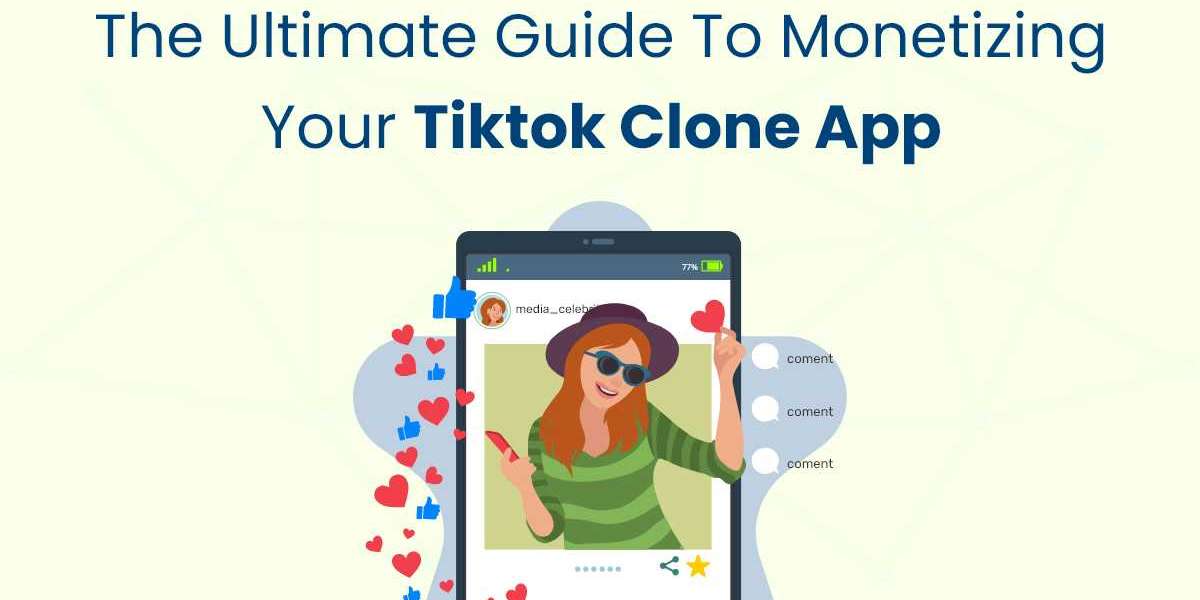Creating a successful TikTok clone app is just the first step; the real challenge lies in monetizing it effectively. With the right strategies, you can generate substantial revenue while offering value to your users. Here’s the ultimate guide to monetizing your TikTok clone app.
1. In-App Advertising
Banner Ads: Placing banner ads at strategic locations within your app can generate steady revenue. Ensure these ads are non-intrusive to maintain a positive user experience.
Interstitial Ads: These full-screen ads appear at natural transition points in the app, such as between video views. They offer higher engagement rates but should be used sparingly to avoid user frustration.
Native Ads: Seamlessly integrated into the app’s content, native ads appear less intrusive and more engaging. These can be video ads, sponsored posts, or branded content.
Rewarded Ads: Offer users incentives, such as unlocking special features or currency, for watching ads. This method not only boosts engagement but also increases ad view rates.
2. In-App Purchases
Virtual Goods: Sell virtual items like stickers, filters, and special effects that users can apply to their videos. These small purchases can add up to significant revenue over time.
Premium Features: Offer advanced features, such as enhanced editing tools, exclusive content, or priority posting, as paid upgrades. This model works well if your app has a loyal user base willing to pay for added value.
Currency Systems: Implement an in-app currency that users can purchase with real money. They can then use this currency to buy virtual goods or access premium features.
3. Subscription Models
Freemium Model: Offer basic features for free while charging for premium features through a subscription. This model can attract a large user base initially, with a subset converting to paid users.
Tiered Subscriptions: Provide different subscription levels with varying access to features. For example, a basic subscription might offer ad-free viewing, while a premium subscription includes advanced editing tools and exclusive content.
4. Brand Partnerships and Sponsorships
Sponsored Content: Collaborate with brands to create sponsored content. This can include branded challenges, sponsored filters, or product placements within user-generated videos.
Influencer Partnerships: Partner with popular influencers who can promote products or services within their videos. This strategy leverages the influencers' reach and credibility to enhance brand visibility.
Branded Hashtag Challenges: Encourage users to participate in branded hashtag challenges. Brands pay for the promotion, and users create content around the brand’s theme, increasing engagement and visibility.
5. Live Streaming and Virtual Gifts
Live Streaming: Enable live streaming features where users can broadcast in real-time. During live sessions, viewers can send virtual gifts purchased with real money. This creates a direct revenue stream while enhancing user interaction.
Virtual Gift Stores: Create a store where users can buy virtual gifts to send to their favorite content creators. This not only generates revenue but also fosters a sense of community and support within the app.
6. E-Commerce Integration
In-App Stores: Integrate e-commerce features that allow users to purchase products directly from the app. This can include merchandise from popular creators, branded products, or other relevant items.
Shoppable Videos: Enable users to tag products in their videos, linking directly to e-commerce sites. This turns engaging content into a direct sales channel, benefiting both users and brands.
7. Data Monetization
Anonymous Data Sharing: Collect anonymous user data and sell insights to marketers and advertisers. Ensure compliance with data privacy regulations to maintain user trust and avoid legal issues.
Conclusion
Monetizing a TikTok clone app requires a multi-faceted approach that balances user experience with revenue generation. By leveraging in-app advertising, purchases, subscriptions, brand partnerships, live streaming, e-commerce integration, and data monetization, you can create a sustainable business model.
It’s essential to continually analyze user behavior and feedback to optimize your monetization strategies. Experiment with different approaches, track their performance, and adapt as needed to maximize revenue while keeping users engaged and satisfied. With the right strategies in place, your TikTok clone app can become a profitable venture in the competitive world of social media.







